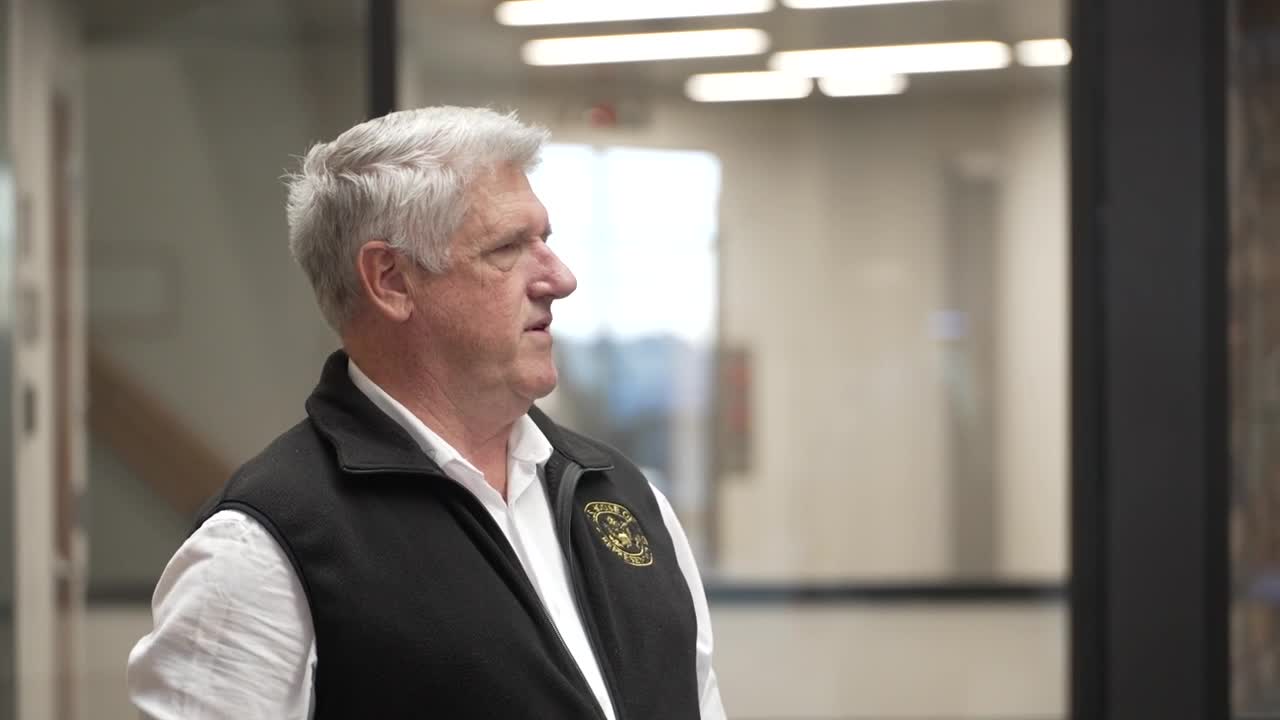HELENA — The federal government shutdown has now lasted 27 days. During that time, the U.S. House hasn’t been in full session, as majority Republicans argue they’ve done their work by passing a short-term funding extension and that it’s up to the Senate to take action.
Without work happening in Washington, D.C., that’s left members like Montana’s Rep. Troy Downing to make the case for resolving the funding impasse from their home districts.
(Watch the video to hear more on Downing's expectation for when the shutdown could be resolved.)
“We're all hoping and praying that we can get past this quickly because it's not good for America, it's not good for our federal workers,” Downing told MTN Monday.
On Monday morning, Downing visited Helena Regional Airport. He brought along coffee and donuts from 1889 Coffee House – a “thank you” for Transportation Security Administration and air traffic control employees who are still working through the shutdown, and now starting to miss paychecks.
“Some may say, ‘Well, they're still going to get paid later,’ but not everybody has the luxury of having enough money or reserves to cover their expenses now, going forward,” said Downing. “A lot of folks need that paycheck to come in. So I'm really hoping that we see this clear up quickly, so that we can get back to doing the work that we were sent to D.C. to do.”

Most TSA and air traffic control workers are considered “essential,” meaning they continue working during a federal funding lapse, but without pay.
During the last government shutdown, which lasted 35 days in 2018 and 2019, there were increasing reports of airport staffing shortages leading to delays. Over this weekend, national news reported a jump in staffing shortages at airports across the country.
Helena Regional Airport Director Jeff Wadekamper says they've been lucky so far and haven't seen many direct impacts since the shutdown began.
“Some of the bigger hub airports and the air traffic system in general, that's typically where we see more delays and things of that nature that may or may not be tied to the shutdown, might be tied to other operational issues,” he said. “But locally here, knock on wood, so far, so good.”
Downing said he also hasn’t heard about many airport impacts in Montana so far.
“I'm proud of those workers with this uncertainty that are still showing up to make sure that the wheels stay on the bus and the trains stay on the tracks and the airplanes stay in the air,” he said. “I'm really happy that we have that because it's not easy.”
It will take 60 votes to get a government funding plan through the Senate, so majority Republicans will need support from at least seven Democrats. Throughout the shutdown, one of Democrats’ primary requests has been to extend expiring subsidies for health plans under the Affordable Care Act.
Downing said Congress can have discussions about those issues, but they should happen through the normal legislative process and they shouldn’t happen until there’s agreement on a “clean” bill that only resumes government funding.
“We need to be talking about these, but it needs to be going through committee where you're bringing in stakeholders and you're having these conversations – not simply, ‘It's our way or the highway,’” he said.

MTN asked Downing if he thought pressure was building for lawmakers to reach a resolution on reopening the government. He said he believes there’s a “strong possibility” Congress could reach a deal as soon as next week.
“I really think there's already so much pressure from industry that requires those federal programs, from folks that are threatened to not get their nutritional assistance, SNAP or WIC payments – there's so much out there that's going to put pressure on getting people to the table,” he said.
While Downing put the shutdown and federal airport workers at the center of his visit, that wasn’t the only issue he discussed. Wadekamper also talked to him about one of Helena Regional Airport’s top infrastructure priorities: a request for upgraded radar, to make it easier to control air traffic below 10,000 feet.
“Our airspace is very safe the way it's set up now, but it could be even safer, and it could be much more efficient,” said Wadekamper.



